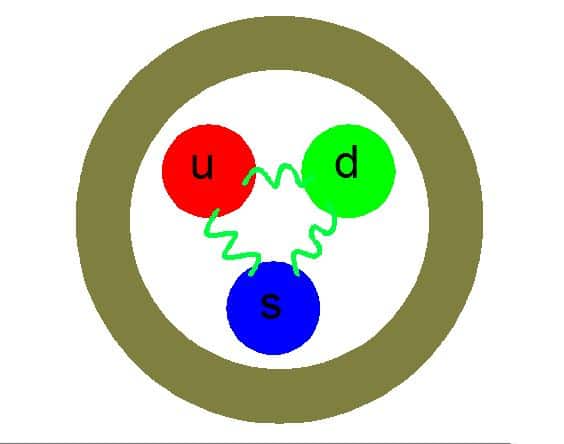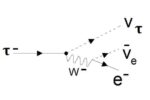Lambda Baryon, Properties and Nature to Know.
The Lambda baryon, often denoted as Λ0 is a fundamental particle in particle physics. It is a well-studied particle within the framework of the Standard Model of particle physics, which describes the electromagnetic, weak, and strong nuclear interactions between elementary particles.
What is Lambda Baryon?
The Lambda baryon, often denoted as Λ0, is a fundamental particle in particle physics. It is a well-studied particle within the framework of the Standard Model of particle physics, which describes the electromagnetic, weak, and strong nuclear interactions between elementary particles. The Standard Model treats the Lambda baryon as a composite particle made up of three quarks: one up quark (u), one down quark (d), and one strange quark (s)

Properties of the Lambda Baryon:
1.Quark Composition: The Lambda baryon is composed of three quarks: one up quark (u), one down quark (d), and one strange quark (s). The combination of these three quarks gives the Lambda a net electric charge of 0 (neutral).
2.Isospin: The Lambda baryon belongs to an isospin multiplet, which is a quantum number related to strong nuclear force interactions. The isospin of the Lambda baryon is I = 0, indicating that it does not participate in the isospin interactions between up and down quarks.
3.Spin: The spin of the Lambda baryon is 1/2. Spin is a fundamental property of elementary particles, and Lambda’s spin is a crucial factor in understanding its behavior and interactions.
4.Mass and Energy: The mass of the Lambda baryon is approximately 1115.68 GeV/c2 (gigaelectronvolts per speed of light squared). The energy associated with this mass is due to the binding energy of the three constituent quarks, which are held together by the strong nuclear force.
5.Lifetime: The Lambda baryon is a relatively long-lived particle compared to some other unstable particles. Its average lifetime is about 2.632 x 10-10 seconds (or 263.2 picoseconds) in its rest frame before it undergoes decay.
6.Decay Modes: The Lambda baryon can decay via two primary modes:
a. Λ0 → p + π⁻: In this decay mode, the Lambda baryon decays into a proton (p) and a negatively charged pion (π⁻). This decay occurs via the weak force interaction.
b. Λ0 → n + π⁰: The Lambda baryon can also decay into a neutron (n) and a neutral pion (π⁰) through the weak force interaction. The decays of the Lambda baryon occur through the weak force, which is responsible for processes involving changes in quark flavor and lepton interactions.
Nature of the Lambda Baryon:
The Lambda baryon is a fascinating particle that plays a significant role in the study of strong and weak nuclear forces. Its nature and properties have implications in various areas of particle physics and cosmology:
1.Strong Nuclear Force: The Lambda baryon is composed of quarks held together by the strong nuclear force, which is mediated by particles known as gluons. Studying the Lambda baryon’s interactions provides valuable insights into the behavior of the strong force and the structure of baryons.
2. Strangeness: The presence of a strange quark in the Lambda baryon sets it apart from other light baryons, such as protons and neutrons. Strangeness is a quantum number associated with strange quarks, and its conservation in strong and electromagnetic interactions has been a subject of study.
3.Quark Flavor Changing: The decays of the Lambda baryon involve the conversion of a strange quark into either an up or down quark. Such processes are examples of flavor-changing weak interactions, which are important for understanding the dynamics of particle decays and weak force phenomena.
4.Cosmic Nucleosynthesis: During the early stages of the universe’s evolution, known as cosmic nucleosynthesis, baryons like the Lambda played a role in the formation of light elements, such as helium and lithium.
5.Hadron Colliders and Particle Experiments: Particle colliders, such as the Large Hadron Collider (LHC), allow researchers to produce Lambda baryons and study their properties in detail. These experiments help validate and refine theoretical models of particle interactions. Astrophysical Environments: Strange baryons like the Lambda are also of interest in astrophysics, as they may be involved in certain astrophysical phenomena, such as the interior of neutron stars.
Conclusion:
In summary, the Lambda baryon is a fundamental particle that provides valuable insights into the strong and weak nuclear forces, the structure of matter, and the early universe. Its unique quark composition, decay modes, and properties contribute to our understanding of the Standard Model of particle physics and the universe’s fundamental building blocks.



0 Comments